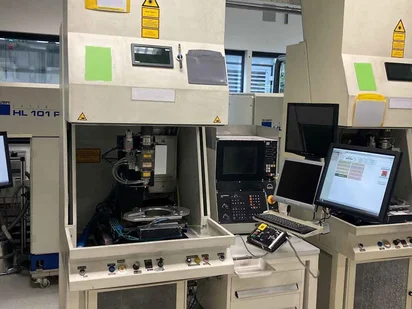The Rofin Pulse 250W is a prominent laser system known for its precision and versatility in various industrial applications. This article provides an in-depth look at the Rofin Pulse 250W, highlighting its features, uses, and advantages.
What is the Rofin Pulse 250W?
Introduction to Rofin Laser Systems
Rofin, a leading name in laser technology, specializes in developing high-performance laser systems for a range of industrial applications. The Rofin Pulse 250W is part of their portfolio, designed to offer precision and efficiency.
Overview of the 250W Model
The Rofin Pulse 250W is a pulsed laser system characterized by its 250-watt power output. It is engineered to deliver high-quality laser pulses suitable for various materials and applications.
Key Features of the Rofin Pulse 250W
High Power Output
- 250W Laser Power: Provides robust performance suitable for demanding industrial tasks.
- Pulse Energy: Capable of delivering high energy per pulse, which enhances its cutting and engraving capabilities.
Precision and Control
- Pulse Duration: Offers precise control over pulse duration, allowing for fine-tuning of the laser parameters to suit different applications.
- Beam Quality: Ensures a high-quality laser beam for accurate and clean results.
Versatility
- Material Compatibility: Effective on a wide range of materials, including metals, plastics, and ceramics.
- Application Flexibility: Suitable for tasks such as cutting, welding, marking, and engraving.
Applications of the Rofin Pulse 250W
Industrial Cutting
- Metal Cutting: Efficient for cutting various metals, including stainless steel and aluminum.
- Precision Cutting: Provides clean and precise cuts, essential for high-accuracy components.
Welding
- High-Strength Joints: Ideal for creating strong, reliable welds in metal parts.
- Minimized Heat-Affected Zone: Produces minimal heat-affected zones, preserving the integrity of the surrounding material.
Marking and Engraving
- Permanent Marking: Suitable for creating permanent markings and engravings on a variety of surfaces.
- Detailed Graphics: Capable of achieving fine details and intricate designs.
Research and Development
- Prototyping: Useful in R&D environments for prototyping and testing new materials and designs.
- Material Testing: Allows for precise material testing and analysis.
Benefits of Using the Rofin Pulse 250W
Enhanced Performance
- Efficiency: High power output and precision contribute to efficient and effective processing.
- Quality: Ensures high-quality results with minimal defects or imperfections.
Cost-Effective
- Durability: Built for long-term use, reducing the need for frequent replacements or repairs.
- Reduced Waste: High precision minimizes material waste, leading to cost savings.
Ease of Integration
- Compatibility: Easily integrates with existing manufacturing systems and workflows.
- User-Friendly Controls: Intuitive controls and settings for straightforward operation and adjustments.
Maintenance and Support
Routine Maintenance
- Regular Checks: Periodic maintenance is essential to ensure optimal performance and longevity.
- Cleaning: Regular cleaning of the optical components to maintain beam quality.
Technical Support
- Manufacturer Support: Access to technical support and service from Rofin or authorized service centers.
- Training: Training programs available to ensure proper use and maintenance of the system.
Comparing the Rofin Pulse 250W with Other Models
Similar Models
- Power Variants: Comparison with other laser systems with different power outputs and features.
- Technological Differences: Analysis of advanced features and technological advancements in competing models.
Choosing the Right Model
- Application Needs: Selection based on specific application requirements and desired performance.
- Budget Considerations: Balancing features with budget constraints for the best value.
Conclusion
The Rofin Pulse 250W stands out as a powerful and versatile laser system, offering high performance for a range of industrial applications. Its robust power output, precision control, and adaptability make it a valuable tool for cutting, welding, marking, and more. Understanding its features and benefits helps in making informed decisions about its integration into industrial processes, ensuring enhanced efficiency and quality in manufacturing and research environments.

Leave a Reply